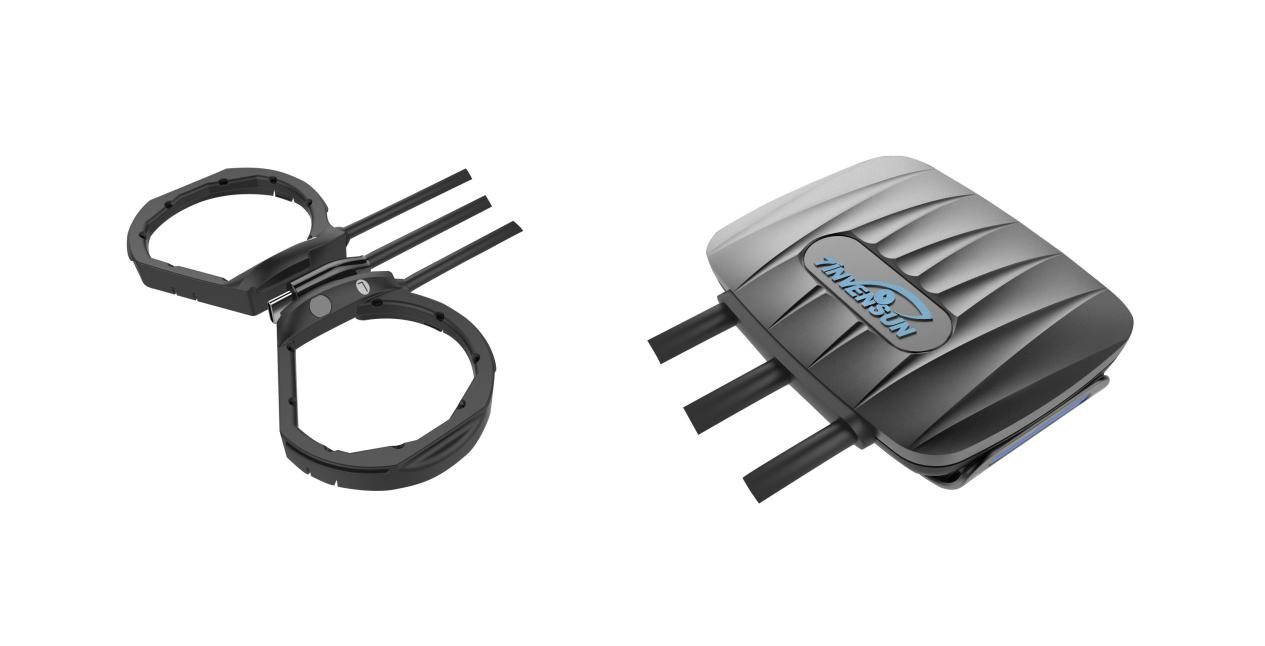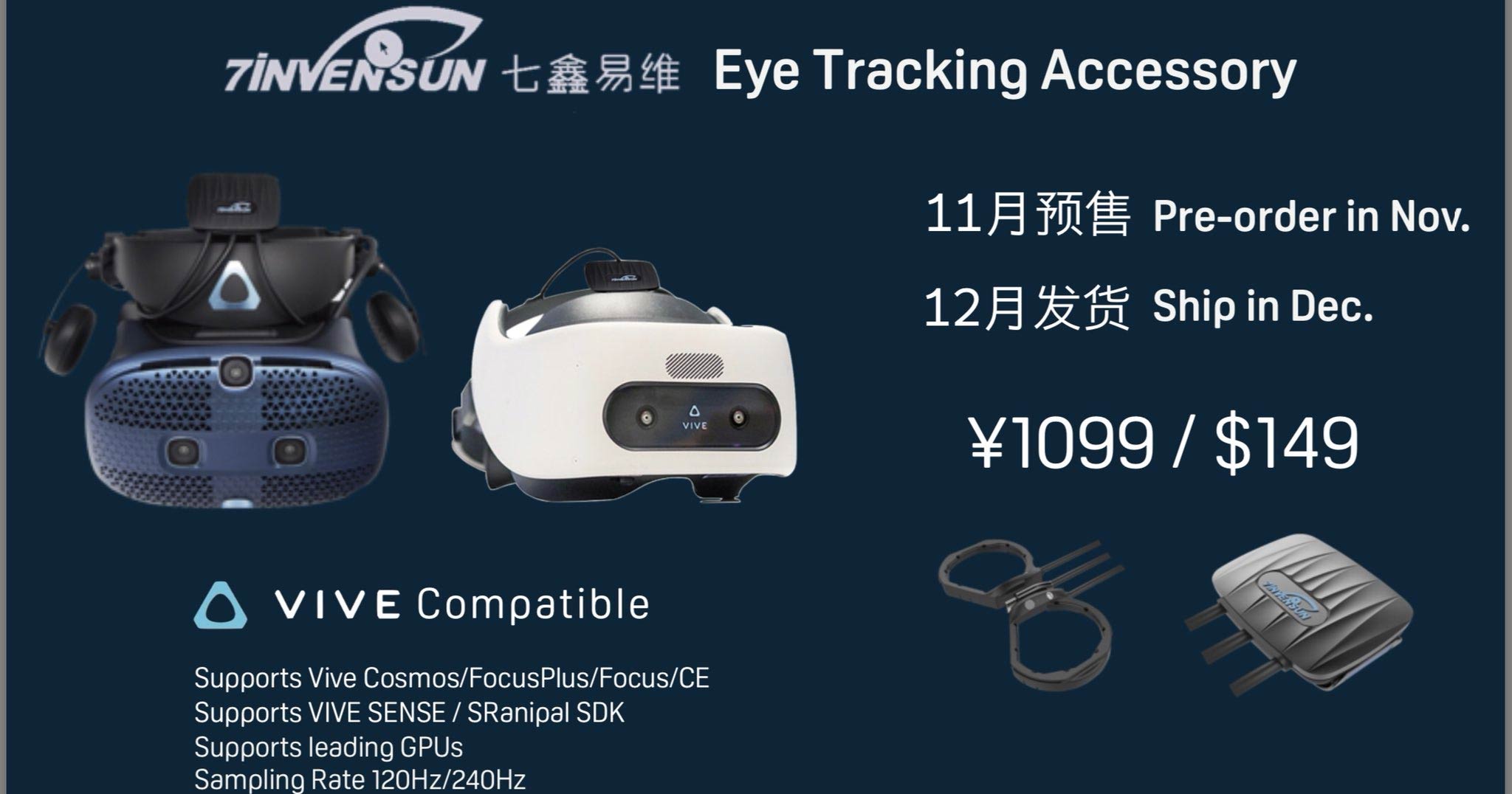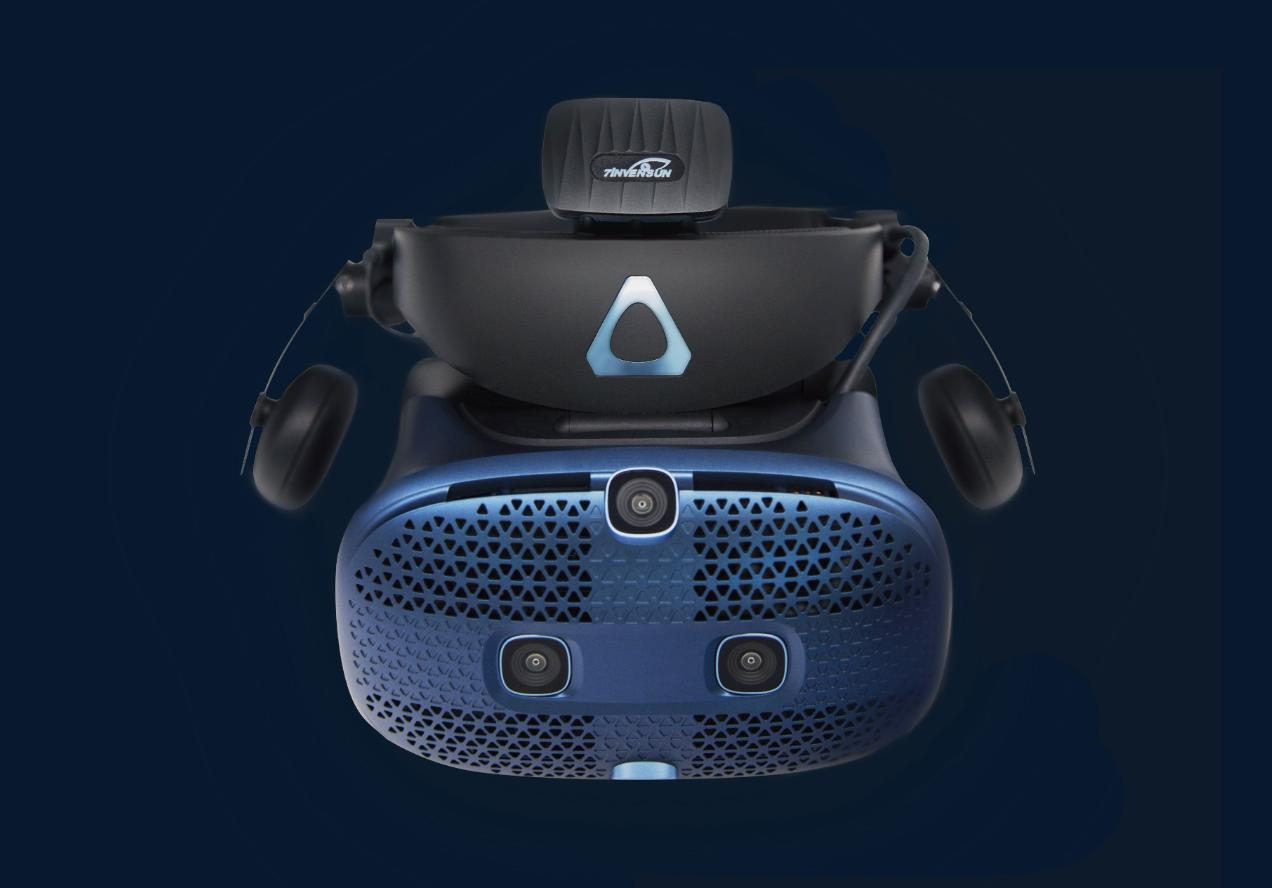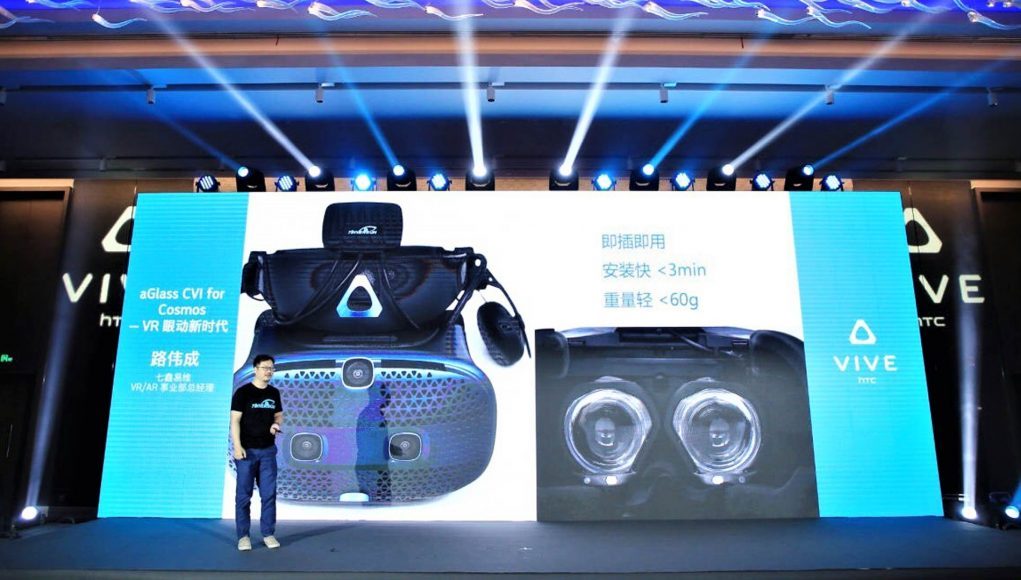Today at HTC’s Vive Developer Meeting in Beijing and its simultaneous Shanghai-based Vive Ecosystem Conference, Chinese eye-tracking startup 7invensun debuted a new eye-tracking module that’s not only affordable at $150 (¥1100 RMB), but is designed to support all of HTC’s VR headsets, past and present.
Called Droolon F1, 7invensun’s new eye-tracking module was primarily announced to target the company’s upcoming Vive Cosmos, the inside-out tracked PC VR headset arriving on October 3rd for $700.
However, as an official product partner with HTC, 7invensun says that Droolon F1 will also be compatible with the original Vive, Vive Pro, Vive Focus, and Vive Focus Plus.

There isn’t any official information out there in English yet, although according to Chinese publication CNW (Chinese), Droolon F1 connects to the VR headset via USB and uses its USB port to provide dual-eye sync data. The standard version, CNW reports, has a sampling rate of 120 Hz, but can be customized to run at 240 Hz.
At the time of this writing, neither 7invensun nor HTC have mentioned what countries it intends on supporting at Droolon F1’s launch, however the $150 USD price was unveiled onstage at the enterprise-focused Shanghai event which points to a probable offering outside of China. Pre-orders are said to begin sometime in November with shipping taking place in December.

Unlike 7invensun’s previous aGlass modules, which used its own proprietary eye-tracking API, Droolon F1 is said to use HTC’s official eye-tracking API, SRanipal SDK. This essentially allows developers to target both Droolon F1 and Vive Pro Eye, HTC’s enterprise-focused headset with integrated eye-tracking.
The size of the module is also said to be smaller in comparison to the company’s previous eye-trackers, weighing in at only 60g (~2.1 oz). It’s said to feature a more convenient assembly, taking a purported three-minutes of setup time.

7invensun initially launched its first aGlass module (DK1) for HTC Vive at the end of 2016, and later released the second iteration in 2017. Shortly afterwards, the company was accepted into HTC’s second batch of Vive X accelerator, which provided the company financial investment and mentorship. One short year later, the 7invensun confirmed aGlass DK2’s compatibility with Vive Pro.
As with its previous products, Droolon F1 is being targeted at developers. Current apps and games can’t make ready use of eye-tracking without being created specifically for the task, although the low price point may prove tempting to not only a wide array of developers, but (ultra) early adopters who want to experience the first experiences made specifically with eye-tracking in mind.
If you want to learn about eye-tracking and its many uses, check out our deep dive article on why eye-tracking is a game changer for VR.







